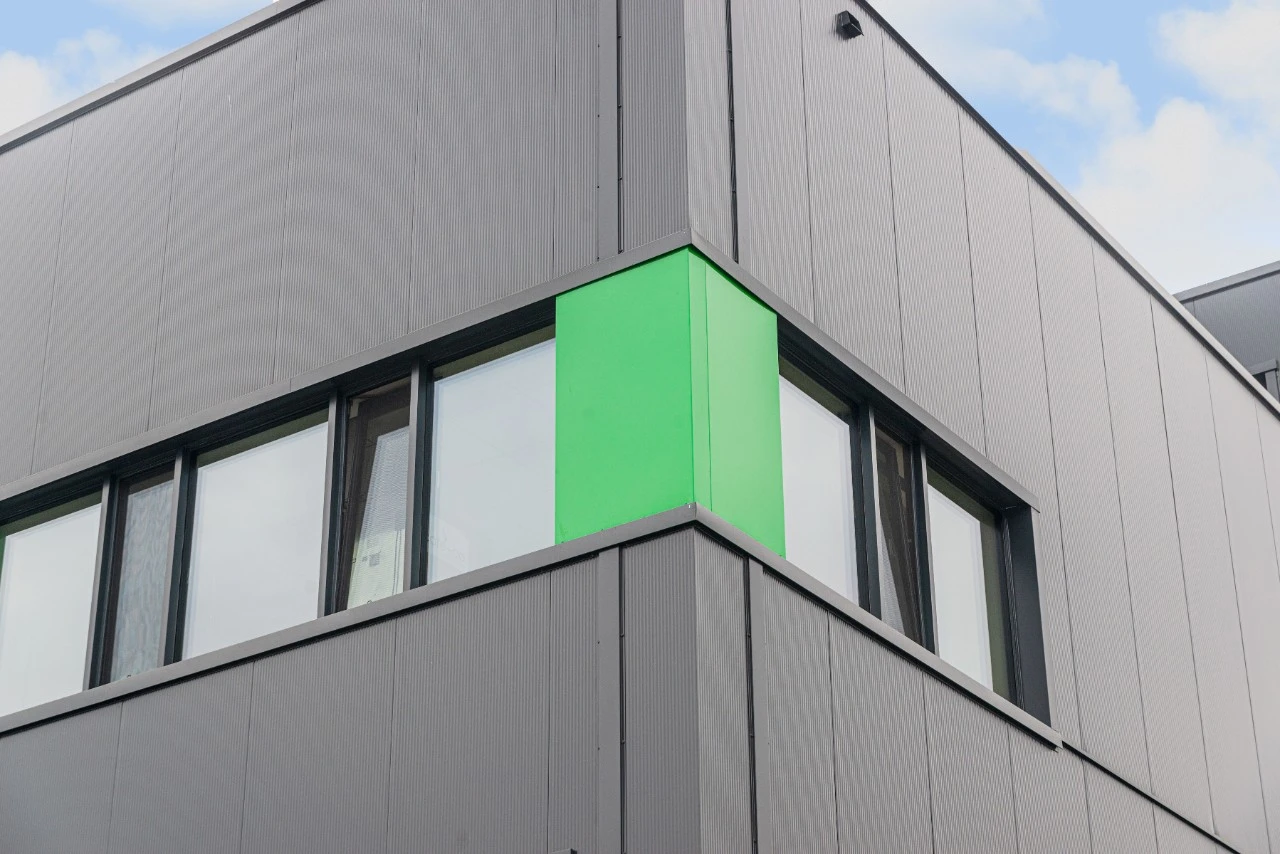Bez kategorii
PIR Roof Panels – Modern Thermal Insulation

If you’re faced with the decision of choosing a material for roof insulation, PIR roof panels might be the perfect choice. Why? The reason is simple – these panels are praised for their excellent insulation properties, making them indispensable for retaining heat. Their low thermal conductivity coefficient, as low as 0.020 W/mK, places them among the most efficient insulation materials available on the market.
PIR panels offer many benefits:
- Lightweight – easy to install and transport, without overloading the building structure, which is crucial when renovating older buildings.
- Durability – resistant to water, mold growth, and deformation due to temperature, which extends their lifespan.
- Fire resistance – a safe choice for all types of buildings.
- Eco-friendly – recyclable, making them environmentally friendly.
- Versatility – used for the insulation of roofs, walls, floors, ceilings, foundations, balconies, and terraces.
PIR panels consist of a core made of polyisocyanurate foam and cladding materials such as aluminum or fiberglass, ensuring a durable bond and high resistance to external factors.
In summary, PIR roof panels are a versatile, durable, and eco-friendly solution that works well in many applications. Their insulation properties, lightweight nature, and fire resistance make them an ideal choice for modern buildings.
What are PIR Sandwich Panels?
If the term „PIR sandwich panels” seems unfamiliar, don’t worry. PIR panels are an innovative construction solution, consisting of a core made of polyisocyanurate foam, surrounded on both sides by galvanized steel sheet. This combination gives them exceptional thermal and structural properties, making them highly efficient for various applications.
PIR sandwich panels are a popular choice in industrial and commercial construction. They are commonly found in:
- production halls,
- cold storage facilities,
- livestock buildings,
- garages,
- utility rooms.
Their versatility makes them an excellent solution for many construction projects where thermal insulation and durability are key factors.
How to Use PIR Roof Panels in Construction?
PIR roof panels are a true chameleon in the world of construction. Their versatility allows them to be used in many places, from the roof to the foundation. Here are a few key applications:
- Roof insulation – provides excellent thermal insulation, which is invaluable for maintaining the right temperature inside buildings.
- Wall, floor, and ceiling insulation – perfect for projects where energy efficiency and durability are priorities.
- Balconies and terraces – their lightweight nature does not overload the structure, which is especially important for large surfaces.
For large facilities such as production halls, warehouses, or big-box stores, PIR roof panels are often chosen as roofing material. Their light weight and excellent thermal insulation make them an ideal choice.
Application of PIR Panels in Industrial and Commercial Buildings
In industries and commerce, where every penny counts, PIR sandwich panels are an ideal solution. Here’s why:
- Durability – resistant to mechanical damage, which is crucial in high-traffic areas.
- Versatility – excellent for industrial halls, warehouses, and logistics centers.
- Efficiency – provides durable and effective insulation solutions.
PIR Panels in Cold Storage and Warehouses
In cold storage facilities and livestock buildings, PIR sandwich panels are indispensable. Their properties include:
- Excellent insulation properties – key for controlling temperature and humidity.
- Moisture resistance – ideal for locations requiring precise control of conditions.
- Energy savings – helps maintain proper conditions, leading to lower costs.
In conclusion, PIR roof panels are not just an insulation material but a true game-changer in construction. Their versatility and efficiency make them an ideal choice for a wide range of applications, from industry to refrigeration.

How to Properly Build and Install PIR Panels?
If you’re wondering how PIR sandwich roof panel installation works, you’re in the right place. This process is key to ensuring the durability and stability of the entire structure. PIR roof panels are secured using steel screws that pass through the panel and attach it to the building’s structure. This method of installation guarantees not only solidity but also the longevity of the entire construction.
What is Trapezoidal Profiling and What is Its Use?
Among the key structural elements of sandwich panels is the trapezoidal profile. This unique shape of the outer cladding allows it to carry high loads, making it ideal for use in both single-span and multi-span systems. As a result, PIR sandwich panels with trapezoidal profiling can be used in a variety of structural systems, increasing their versatility and application in construction.
Tongue-and-Groove Joint: Guarantee of Quick and Tight Installation
One cannot overlook the innovative solution of the tongue-and-groove joint in PIR sandwich panels. This unique joining mechanism provides simple and quick installation, which is crucial in projects where time plays a key role. Thanks to the tongue-and-groove system, the panels connect in a way that ensures high airtightness, which is essential for thermal efficiency.
What Materials and Coatings Are Used in PIR Panels?
PIR sandwich panels, praised for their excellent insulation properties, can be coated with various finishes that enhance their durability:
- Polyester coating – resistant to UV radiation and changing weather conditions.
- Polyurethane coating – flexible and resistant to chemicals, ideal for extra protection.
- PVC laminate – durable and moisture-resistant, excellent for areas exposed to water.
How to Properly Install and Maintain PIR Roof Panels?
The choice of PIR roof panel installation technique impacts both the aesthetics and functionality of the structure. You can choose:
- Visible fasteners – screws are visible on the panel’s surface. This solution is beneficial in industrial projects where aesthetics are not a priority.
- Hidden fasteners – maintains a smooth surface, perfect for buildings where appearance matters.
How to Care for a PIR Roof to Ensure Long Service Life?
To ensure the longevity and maintain the protective properties of PIR roof panels, regular maintenance is essential. Here are a few key steps:
- Periodic cleaning of the roof to remove contaminants.
- Regular inspections to check the condition of the fasteners.
- Checking the insulation properties to ensure they remain at their highest level.
Regular maintenance not only extends the life of the roof but also makes the investment in PIR roof panels more cost-effective in the long term.
-

 Dieta2 lata ago
Dieta2 lata agoTurystyka kulinarna po polskiej regionalnej kuchni
-

 Porady2 lata ago
Porady2 lata agoLogistyka w gastronomii – Nowoczesne metody i ich znaczenie
-

 Porady2 lata ago
Porady2 lata agoBHP w hotelu – Bezpieczeństwo i higiena pracy
-

 Dieta2 lata ago
Dieta2 lata agoCo wiesz o gotowaniu? Quiz kulinarny, sprawdź swój smak!
-

 Dieta2 lata ago
Dieta2 lata agoWege catering – zdrowy i smaczny wybór dla Twojej diety
-

 Life style2 lata ago
Life style2 lata agoOgródek Restauracyjny – Pomysł na Wyjątkową Przestrzeń
-

 Dieta2 lata ago
Dieta2 lata agoCatering dla alergików – Doskonały Wybór dla alergików
-

 Life style2 lata ago
Life style2 lata agoMedia społecznościowe – Definicja, korzyści i zastosowania


